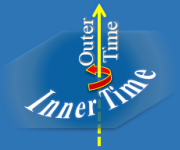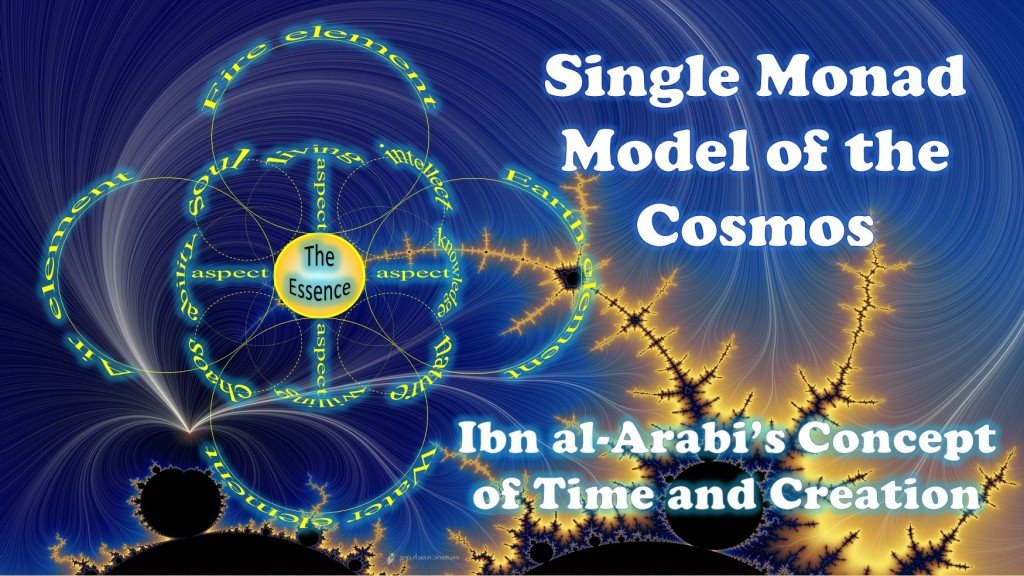Top Pages Related to: Time State
=> TIME CHEST - 3.3.3 The Two Arrows of Time... between the two vacuum states (as Euclidean spaces or normal complex numbers): (c, 0) and (c, c) , while collectively they appear to be evolving according to the physical (hyperbolic) space-time states (c, v) , as split-complex numbers. Therefore, the vacuum state can be described either a ...
=> THE DOT POSTULATE - 5.2. The Two Arrows of Time:... oscillating between the two vacuum states (as Euclidean spaces or normal complex numbers): and , while collectively they appear to be evolving according to the physical (hyperbolic) space-time states , as split-complex numbers. Therefore, the vacuum state can be described either as the n ...
=> Solving the Arrow of Time Problem Based on the Duality of Time Theory... between the two vacuum states (as Euclidean spaces or normal complex numbers): (c, 0) and (c, c), while collectively they appear to be evolving according to the physical (hyperbolic) space-time states (c, v), as split-complex numbers. Therefore, the vacuum state can be described either as ...
=> ULTIMATE SYMMETRY - II.4.2 The Two Arrows of Time... llating between the two vacuum states (as Euclidean spaces or normal complex numbers): and , while collectively they appear to be evolving according to the physical (hyperbolic) space-time states , as split-complex numbers. Therefore, the vacuum state can be described either as the n ...
=> The Duality of Time Theory... n the two vacuum states (as Euclidean spaces or normal complex numbers): ( c , 0 ) and ( c , c ) , while collectively they appear to be evolving according to the physical (hyperbolic) space-time states ( c , v ) , as split-complex numbers. Therefore, the vacuum state can be described eithe ...
... tational masses, in addition to allowing energy and mass to become imaginary, negative and even multidimensional. This will be discussed further in sections 5.1 , 5.2 and 5.4 , respectively. ...
... tational masses, in addition to allowing energy and mass to become imaginary, negative and even multidimensional. This will be discussed further in sections 5.1 , 5.2 and 5.4 , respectively. ...
... tational masses, in addition to allowing energy and mass to become imaginary, negative and even multidimensional. This will be discussed further in sections 5.1 , 5.2 and 5.4 , respectively. ...
... tational masses, in addition to allowing energy and mass to become imaginary, negative and even multidimensional. This will be discussed further in sections 5.1 , 5.2 and 5.4 , respectively. ...
... tational masses, in addition to allowing energy and mass to become imaginary, negative and even multidimensional. This will be discussed further in sections 5.1 , 5.2 and 5.4 , respectively. ...
... tational masses, in addition to allowing energy and mass to become imaginary, negative and even multidimensional. This will be discussed further in sections 5.1 , 5.2 and 5.4 , respectively. ...
... tational masses, in addition to allowing energy and mass to become imaginary, negative and even multidimensional. This will be discussed further in sections 5.1 , 5.2 and 5.4 , respectively. ...
... dition to allowing energy and mass to become imaginary, negative and even multidimensional. This will be discussed further in sections 5.1 , 5.2 and 5.4 , respectively. ...
... ew dimension that is orthogonal on the previous level. Multiplying with the imaginary unit again causes time to become real again, i.e. like space. This means that each point of our 3 D + 1 space-time is the combination of seven dimensions of time, the first six are the real levels which m ...
... tational masses, in addition to allowing energy and mass to become imaginary, negative and even multidimensional. This will be discussed further in sections 5.1 , 5.2 and 5.4 , respectively. ...
... on x-axis only. Alternatively, we can now use the new time-time interval which is the modulus of complex time: ∥ t c ∥ = t r 2 − t i 2 , and it is indeed the same proper time, τ , in SPECIAL RELATIVITY : ∥ t c ∥ = ( x ∕ c ) 2 − t i 2 = t i ( x 2 ∕ t i 2 ) ∕ c 2 − 1 = t ...
... s situated inside a spatial dimension it will appear to them continuous and infinite, while it forms only one discrete state in the encompassing outer time. As we shall see in section 4.3 , GENERAL RELATIVITY is the first approximation for inside observers, but since the Universe is evolvi ...
... tational masses, in addition to allowing energy and mass to become imaginary, negative and even multidimensional. This will be discussed further in sections 5.1 , 5.2 and 5.4 , respectively. ...
... instance of time, because the resulting instantaneous space is continuous, but when the outward time flows these instances will form a series of discrete states that should be described by QUANTUM FIELD THEORY . If we combine these two descriptions properly, we should be able to eliminate ...
... re-created. Nonetheless, since it is not possible to accelerate a physical object (to make all its geometrical points) to move at the speed of creation c , one alternative way to reach this speed of light, and thus make a new spatial dimension, is to combine the two orthogonal states ( c , ...
... , from our perspective. In this case, the ground state of that vacuum would be ( 0 , c ) , which describes anti-matter as we shall explain further in section 6.1 , when we speak about super-symmetry and its breaking. Equivalently, the apparent velocity v can not exceed c because it is the ...
... tational masses, in addition to allowing energy and mass to become imaginary, negative and even multidimensional. This will be discussed further in sections 5.1 , 5.2 and 5.4 , respectively. ...









